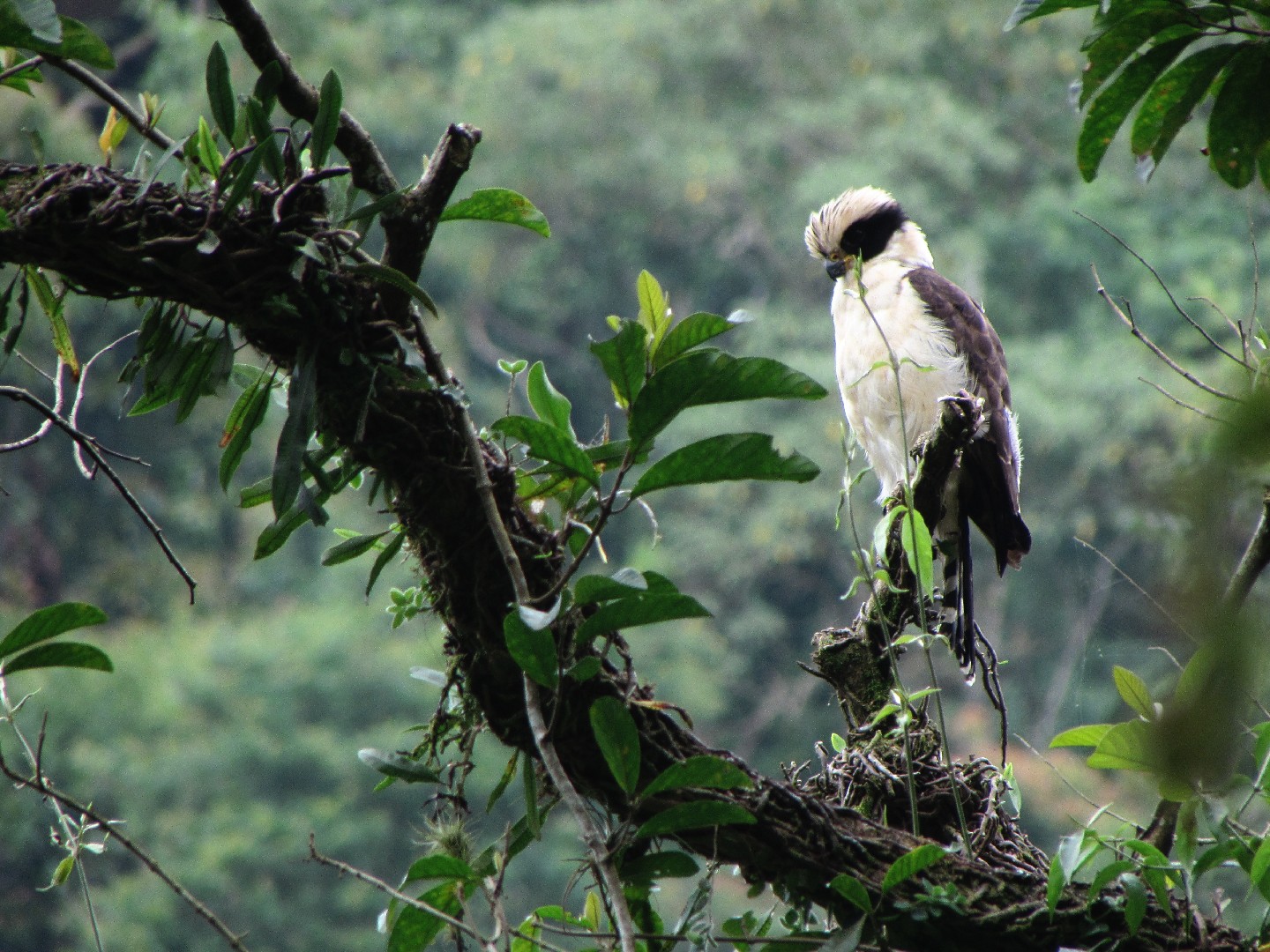Laughing Falcon
A species of Laughing Falcon Scientific name : Herpetotheres cachinnans Genus : Laughing Falcon
Laughing Falcon, A species of Laughing Falcon
Botanical name: Herpetotheres cachinnans
Genus: Laughing Falcon
Content
Description General Info
 Photo By Allan Sobral , used under CC-BY-SA-4.0 /Cropped and compressed from original
Photo By Allan Sobral , used under CC-BY-SA-4.0 /Cropped and compressed from original Description
The laughing falcon is 46 to 56 cm (18 to 22 in) long and has a wingspan of 79 to 94 cm (31 to 37 in). As usual among birds of prey, the females are bigger, weighing 600 to 800 g (1.3 to 1.8 lb) compared to the males' 410 to 680 g (0.90 to 1.50 lb). Adults have a pale buff head, changeable between a more brownish and an almost white hue according to feather wear and individual variation. The broad black face mask stretches across the neck as a narrow collar, bordered with white. On the crown, the feather shafts are dark, producing a somewhat streaked effect. The upper wings and back are blackish brown. The uppertail coverts are whitish buff again, and the rectrices are barred black and whitish, ending in white. The underside is uniformly pale buff; there may be a bit of dark speckling on the thighs, however. The underside of the wing is pale rufous-buff, sometimes with some dark spotting on the underwing coverts. The tips of the primary remiges are barred with pale grey below, their bases are quite rufous. The iris is dark brown, the bill is black with a pale yellow cere; the feet are also pale yellow. Immature birds differ little from adults; they have lighter margins to the back feathers, producing a scalloped effect. The light parts of the plumage are almost white, paler than in adults; the unfeathered parts are also paler. Nestlings are covered in peculiarly dense down, reminiscent of a duckling's; they are generally brownish buff, darker above, and already show the blackish facial marks of the adults. With its big white (immature) or pale buff (adult) head having a dark brown mask from the eyes around to the nape, it is unmistakable. In flight it shows a rufous patch near each wingtip (formed by the basal parts of the primaries) and a shape more like an Accipiter hawk than most of its falcon relatives, with short, rounded wings and a long tail. 
Size
53 cm
Life Expectancy
14 years
Nest Placement
Tree
Feeding Habits
Laughing Falcon primarily preys on snakes, including venomous species, and also consumes lizards, small mammals, bats, and centipedes. Utilizing a distinctive pounce from the air and a powerful bite to subdue prey, laughing Falcon exhibits unique adaptions for handling serpents, such as beheading or tearing them apart. Meals are typically consumed perched.
Habitat
Laughing Falcon's habitat encompasses open and semi-open terrains in Central and South America. Preferring the periphery of lowland forests, gallery forests, and riverine woods, it is also found in secondary forests, savannahs, and areas with scattered trees like palm groves. Laughing Falcon adapts to various altitudes up to 1,500 meters, occasionally reaching 2,400 meters, favoring humid conditions but avoiding dense forest interiors.
Dite type
Carnivorous
General Info
Feeding Habits
Bird food type
Behavior
The flight is slow, with quick, shallow wingbeats interspersed with glides; the bird rarely if ever soars. When it lands, it will jerk the tail forcefully just like a wagtail. A laughing falcon frequently and often conspicuously stays on a perch for hours, sitting upright and observing the ground alertly, sometimes flicking its tail or nodding, or moving around a bit on its perch with slow, cautious little steps. It is generally peaceful and unlike other falcons will not harm smaller birds. 
Distribution Area
It is found from both coastal slopes of Mexico through Central and South America south to the Peruvian Amazon and Bolivian Amazon region, practically all of Brazil, and northern Argentina and Paraguay, at altitudes up to 1,500 m (4,900 feet) (rarely to 2,400 m (7,900 feet) in Colombia), though it is often absent from mountainous regions. It occupies varied habitats, usually including at least scattered trees; it prefers humid regions to arid ones and tends to avoid closed forest. It is generally not migratory, though in some areas it may make seasonal movements. 
Species Status
Not globally threatened.
Scientific Classification
Phylum
Chordates Class
Birds Order
Diurnal Birds of Prey Family
Falcons and caracaras Genus
Laughing Falcon Species
Laughing Falcon